How to Move a Piano and Why You Shouldn’t Do it Yourself
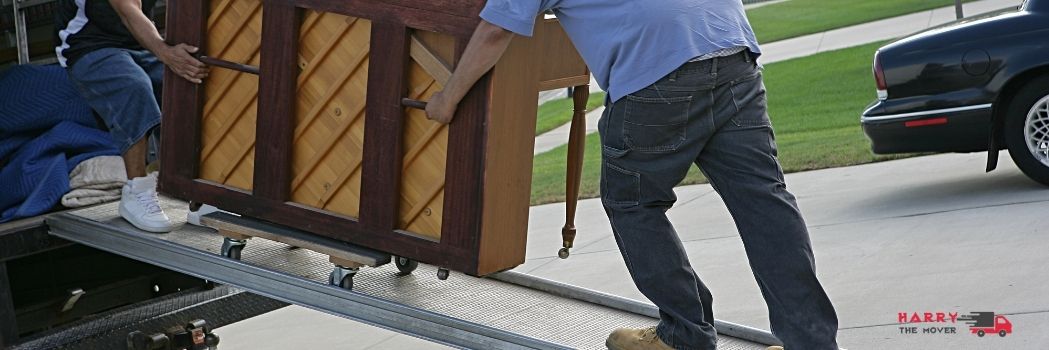
Moving Process
1. Measuring The Dimensions & Door Frames
Before initiating the moving process, it is very important to measure the dimensions of your piano as well as door frames. You have to ensure that you know the exact size and type of your piano along with the sizes of your staircases, entrances and exits.
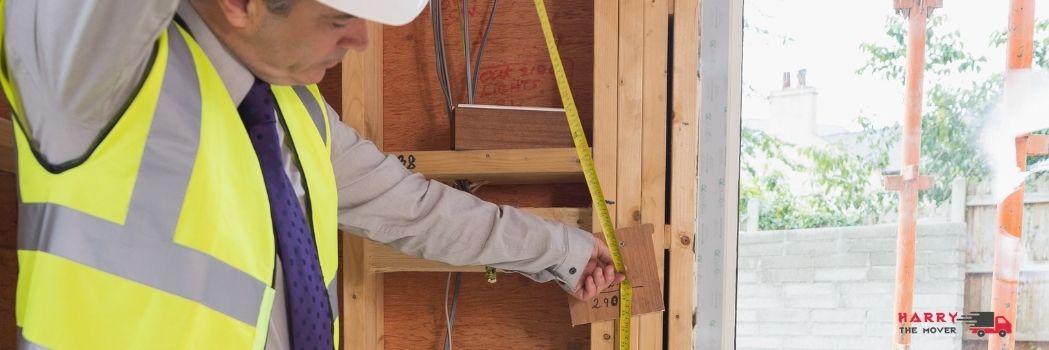
This will assist you to plan your move accurately and prudently. Measure the door frames with tape or a rope to ensure the piano will pass through. Then remove any obstacles, such as carpets, off the walkway.
2. Disassembling The Piano
Before dismantling your piano, remove the decoration from it, if any, to make the process easy and convenient. Slowly and steadily, begin removing the parts of the piano through your hands. Tools like sledgehammers, wire cutters, screwdrivers and eye protection goggles can help you in the process. Next, you can disassemble the strings on the piano’s harp, its wheels and legs. This will transform the bulky and huge piano into small parts which are easy to carry even through the congested entrances and exits. Disassembling hefty items like piano reduces the chances of damage and injury, making your relocation process smooth.
3. Wrapping & Packing
After all the piano parts are dismantled, it’s time to pack all those parts with utmost care. Packing is one of the major factors that decide the risk and damage involved in moving those items. Initiate by taping the cover on the keyboard as a cautious measure. This is done to keep the lid in place throughout the voyage.
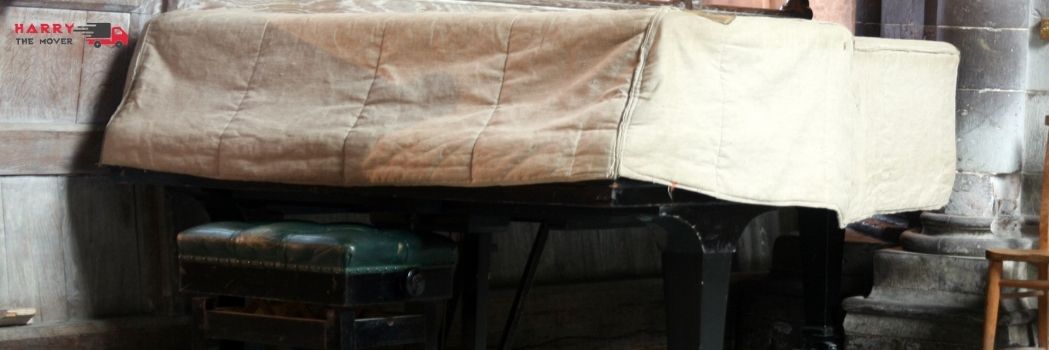
Next, you can wrap the rest of the instrument with plastic wrap or a large enough cloth to completely cover it. Tape the wrap in place. Professionals will pack your piano using proper packing tips and quality packing supplies to ensure that your valuable piano is packed carefully and avoid any damage during transit.
4. Lifting & Loading The Piano
Lifting the piano and loading it in the van or the truck is the most crucial task as the risk of damage is highest at that stage of moving. An upright piano normally weighs 130 kg, while a grand piano weighs thrice more than it. You need at least 3-4 people with strong arms to lift your piano on the dolly. Make sure to secure your piano with dolly straps to avoid any fall or breakage.
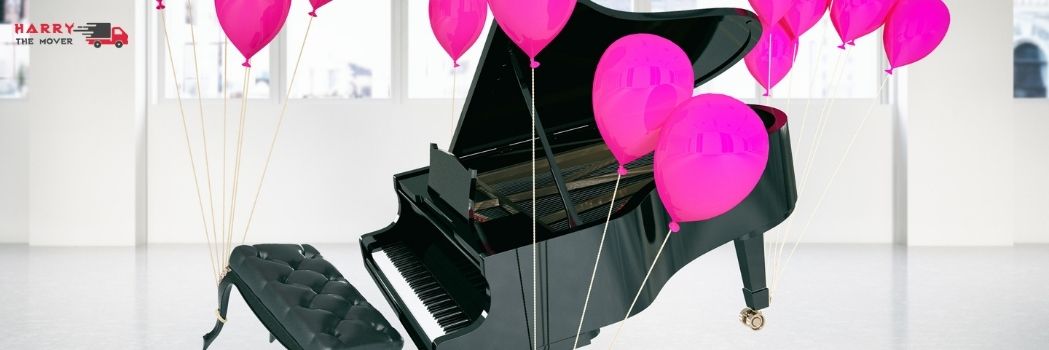
Also, using work gloves for the same task makes the lifting and loading much more convenient. Professionals use special electronic equipment for the same task to avoid hard physical labor. You can use a ramp to load your piano in the van by pulling and pushing it simultaneously. If you’re not careful, the piano’s weight can crush you or, at the very least, cause a small injury. The piano should be positioned against the van’s back wall, with lots of other items in front of it. You can use furniture or a mattress to secure it by placing them in front of the piano.
Tools & Supplies Needed To Move A Piano
Stop what you’re doing and call a piano removal company if you have a grand piano. Amateurs should not try any experiments with them, according to removal experts. This guide will show you how to move a piano.
- For lifting, you’ll need at least four strong sets of arms.
- Tape & Work gloves
- Cardboard pads
- Weightlifting straps & Van ramp
- Heavy-duty dolly & Dolly straps
- Plastic wrap (cloth can also be used)
- At least four people’s upper body strength
Moving Piano Through Stairs
Lifting the piano through stairs is a troublesome task for almost everyone. This is the major reason people go for hiring professional removalists for the same task. Weightlifting straps prove beneficial in case your house has one or two steps. But having more stairs demands a lot of physical strength and caution. You need to lose the dolly and place cardboard pads on all the stairs to avoid the surface from getting scratched or damaged. We recommend you to hire professional movers and packers to overcome this situation and relocate your piano safely.
Baby Piano Vs Grand Piano
The major difference between a grand and a baby piano is size. A baby or upright piano usually weighs around 130 kg, while a grand piano weighs around 500 kg. Therefore, relocation of both kinds requires utmost care and caution. Although you don’t need more than two people to lift and load baby pianos as the experts- it’s better to be safe and secure than sorry while relocating expensive musical instruments like the piano.
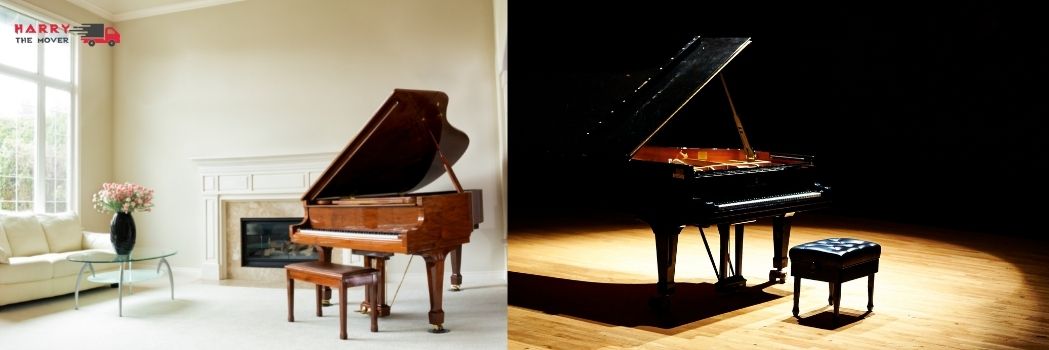
If the instrument is on the property’s upper floors and there is a large enough elevator, you can utilize it. Otherwise, carrying the piano down the stairs will necessitate at least three movers. Before putting the piano in the van’s boot, cover the floor with moving blankets. There are many ways to move a piano, whether an upright one or a grand one. These are just some of those steps that can help you to perform your move safely and effectively
Moving Piano On Carpets & Hard Floors
Having a carpet beneath the piano complicates things somewhat. If you utilize the wrong moving techniques, you’re likely to damage your musical instrument. A piano’s legs will snap if it is pushed across a carpeted floor due to the instrument’s tremendous weight and the carpet’s surface friction. The case is the same on the hardwood floor. Therefore, we highly advise against attempting to transport the piano in this manner. Instead, we advise you to follow the mentioned tips and tricks.
- Find a piece of flat plywood large enough to go under the piano and be stepped on by all three legs.
- Solicit assistance from as many people as you require. Depending on the size of the piano, you’ll likely need at least three people.
- If the distance is long, take breaks and don’t try to move the piano all at once. After all, you don’t want anyone who is assisting you to become injured due to overexertion, do you?
- Remove the plywood from underneath each leg once the piano has been moved to its new place. Apply the same procedure you used to place the piano on top of the plywood to accomplish this.
- To lower the weight of the piano during shipping, dismantle any non-essential pieces.
- Also, clean the hardwood floor first to make it more slippery to reduce surface friction. This will make it easier to slide the plywood sheet with less force.
Conclusion:
Get out of the way if the piano loses its balance; otherwise, it could inflict serious harm or even death. When the move is finished, remember to assemble the piano again. It may appear tough on the outside, but the internal operations are extremely sensitive. When you’re finished with the piano moving process, another smart move is to rent a long-term storage facility where you can keep the musical instrument for as long as you need. The moving company will send it to your specific address when you’re ready to install it at your new address. Quickly get in touch with us and book your safe, secure and damage-free piano move.



